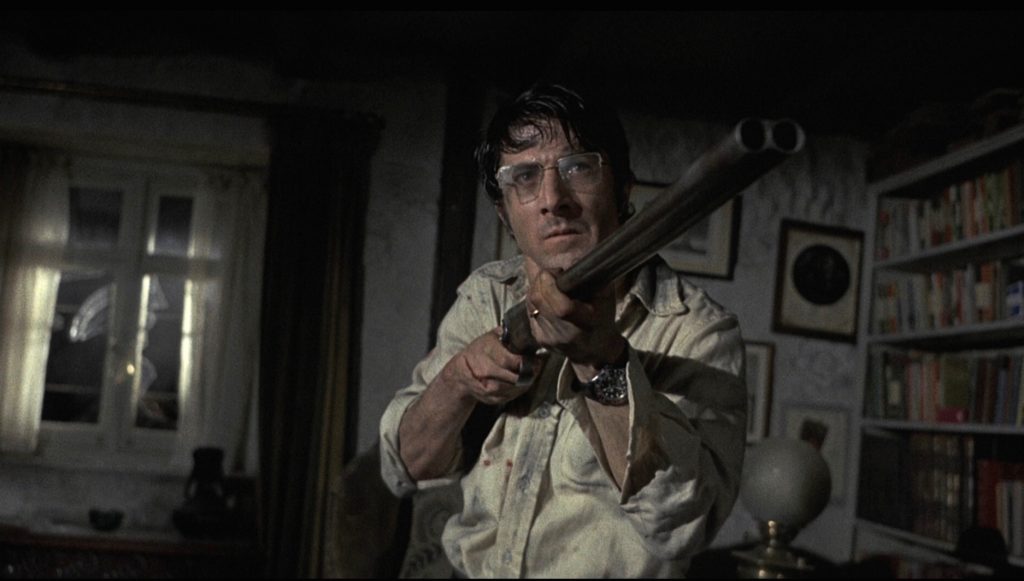Sexual violence perception films: Audience, BBFC and perceptions of sexual violence in Irreversible (2002).
In 2002 a French film, Irreversible, was passed uncut, in spite of a protracted rape scene.
The film was assessed by a consultant psychologist and although it presented some challenging issues, it did not breach the Board’s Guidelines.
The BBFC describes Irreversible like “…work passed with no cuts made.”
This is not a film you can have a non-reaction to. This is a film that does things to the viewers, and they have to be willing to let it. For many, and from the very start of the film, as the camera moves through “The Rectum” accompanied by a discordant drone, this means being willing to feel nauseous and severely disorientated.
Sexual violence perception films: BBFFC
On the film in question the BBFC had long debates. In each case there were scenes involving sexual violence on which they had to make difficult decisions: whether to cut, what to cut?
In making these decisions, they are partly governed by legal requirements. But also they have to make judgements about the films, and make interpretations about the place of the sexual violence within them. To do that, they take what help they can get from available research.
The film was also the object of a study conducted by the BBFC. It was pointed out what the audience thought about the film and compared the results of the research to the BBFC guideline for evaluating sexual violence in films.
The BBFC wrote about it that this is a film, which almost all acknowledge it will ‘not be for everyone’, and in relation to the discussion of the film itself differences of opinion are expected and usually respected.
Despite of the BBFC warming’s, Irreversible was a successful film. It was demonstrated that it was successful due to the fact that the film was the only one to feature an internationally recognised star: Monica Bellucci.
The successfulness of it is also attributable to the intense controversy that accompanied the film, starting when it hit the festival circuit in Cannes in May 2002. However, it was said that the sustained interest in the film cannot be simply explained by the oxygen of publicity and the power of its star.
As it is clear from both the volume and the personal tone of many citizen reviews, and from the length of the exchanges in discussion threads, this is a film that many people genuinely feel a need to talk about.
Sexual violence perception films: the rape scene
The Rape Scene is the core of the discussions by those who love the film through to those who feel it should not have been made.
There are two distinct aspects, which mark responses to this cinematic depiction of rape in exceptional and specific ways:
- the long, unedited duration of the rape: ‘the nine minutes’, in conjunction with its filming;
- the star status of the actress playing the victim.
The fact that Monica Bellucci is an established star and sex symbol impacts on interpretations in a number of ways. In relation to professional and formal reviews it gives rise to narratives of craft, devotion to art, and extreme bravery.
These elements continue into more informal writing, but are joined by often uncomfortable negotiations around it and attraction to her as star. Details about her life, particularly her real relationship to Vincent Cassell are invoked, whilst her beauty and glamour also become an issue.
Do they function to make her more than just anyone – the essence of innocent womanhood as victim, or do they make her an impossibly glamorous victim, undermining the responsible representation of realistic sexual violence?
Sexual violence perception films: the response to the rape in films
A study about the response to the rape in the film highlighted firstly “a position that is dependent on an intense sense of empathy with the victim, Alex. Here it is not unusual for male writers to discuss feeling violated, feeling ‘raped as a viewer.”
This emotional connection perhaps gives the scene its strongest potential to be considered a transformative experience – a means of knowing that what is normally unimaginable (although, of course, a number of people highlight that anal rape is not just something that happens to women).
This ‘co- victim’ response also raises issues of appropriate viewing, guilt, and the public performance of cross-gender empathy and understanding. In the second version viewers construct themselves as powerless witnesses rather than helpless co-victims. Here a notion of collective male guilt is central, and for many men, the process of the responding to the scene can be an act of refusing the totality of the ‘all men are rapists’ argument.
Sexual violence perception films. Conclusion
“I don’t know how much movies should entertain. To me I’m always interested in movies that scar. The thing I love about JAWS is the fact that I’ve never gone swimming in the ocean again.” (David Fincher)
From the beginning, sociologists, politicians and religious pressure groups have examined, been suspicious of and tried to control violent images in films. Surveys and commissions have explored the amount of violence in films and the effect it has on the audience. In fact, the central aspect of screen violence, the central importance of films and art in general, is the relationship between the work and the audience.
The viewer is in a position of power and vulnerability.
Scenes of violence in films explore the spectator’s encounter with the cinematic rape and revenge, homicide and serial killing, torture and terrorism.
With greater expectation of realism, with a greater knowledge of what real violence is like and with the increased sophistication of special effects, the look of cinematic violence has changed beyond recognition.
In the contemporary fascination with images of crime, violence gets under our skin and keeps us enthralled. Going to the cinema, sitting down in the dark to be transported to a separated place, is a peculiar experience, intimate and shared, of a world recognizable and at the same time exotic and magical. The BBFC is aware of these changes and pays a lot of attention in studying the evolution and the transformation in people’s behaviours.
This attitude clearly has come out from the comparison between the decisions made for Straw Dogs (1971) and Irreversible (2002). Thus the conclusion of this examination is that normally the BBFC’s evaluation corresponds to the viewer’s prospect.
Dandi Law Firm provides legal assistance in Copyright and Film. Check out our Services or contact Us!






